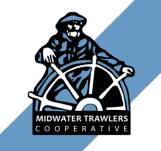(NEWPORT, Ore.) Despite overwhelming opposition from tribes, fishing organizations and coastal communities, the Bureau of Ocean Energy Management (BOEM) announced the release of the final wind energy areas (WEAs) off Oregon’s south coast yesterday February 13, 2024. The WEAs remain unchanged from the draft areas released earlier this year. State agencies, fishermen, environmentalists, state legislators and others raised significant concerns about the draft WEAs, apparently to no avail.
“This is a slap in the face to the many stakeholders who have been trying to engage with BOEM for the last few years,” said Heather Mann, Director of the Midwater Trawlers Cooperative. “BOEM is a rogue federal agency pushing a dangerous agenda largely unchecked. BOEM will stop at nothing until our oceans are littered with wind turbines and all just to meet an arbitrary political deadline.”
Three weeks ago, Oregon’s Coastal Caucus sent BOEM a follow-up letter detailing concerns about the flawed BOEM process and the need for authentic engagement which most agree has not occurred. Oregon state legislators noted, “Coastal community members and individuals tied to the fishing industry have overwhelmingly spoken with great opposition towards offshore wind. These concerns have been echoed by marine scientists, engineers, environmentalists, tribes, and coastal municipalities. We cannot move forward with offshore wind in Oregon until the needs and concerns of these groups have been addressed.”
Mann said authentic engagement with BOEM has been non-existent. “The final wind energy areas are in prime fishing grounds where millions of pounds of sustainable seafood have been harvested. The areas are prime habitat for marine mammals and include nursery grounds for important fish species. BOEM is pitting renewable energy against sustainable food production.”
Fourth-generation fisherman Chris Cooper was also caught off guard by the announcement. “I am shocked and I’m angry,” he said. Cooper has plied the waters off southern Oregon for years. “We gave BOEM our track lines for where we fish, and I guess they have decided that our businesses and livelihoods are worth trading off to create gigantic wind farms. We will not be able to fish in these areas and we have no idea what the impact of these installations will be on the fish species found in there.”
The scale of floating offshore wind being contemplated for the West Coast does not currently exist anywhere in the world. The technology is also not successfully deployed in waters deeper than 300 meters. The WEAs finalized by BOEM for floating turbines off the Oregon coast are at 1300 meters.
Mann summed the situation up by saying, “This is a giant experiment and unfortunately, Oregon’s seafood industry and coastal communities are the ones who will end up paying the price.”
According to the BOEM announcement, the next steps in the process involve preparation of an environmental assessment of potential impacts in those areas. This will include a 30-day public comment period, during which concerned citizens are encouraged by Mann to voice their opposition.
EDITOR’S NOTE: Here is the information to provide comments –
Bureau of Ocean Energy Management, Interior – https://www.federalregister.gov/documents/2024/02/14/2024-02985/notice-of-intent-to-prepare-an-environmental-assessment-for-commercial-wind-leasing-and-site
ACTION: Notice of intent; request for comments.
SUMMARY: The Bureau of Ocean Energy Management (BOEM) intends to prepare an environmental assessment (EA) to consider the potential environmental impacts associated with possible wind energy-related leasing, site assessment, and site characterization activities on the U.S. Outer Continental Shelf (OCS) offshore Oregon. BOEM seeks public input regarding important environmental issues and the identification of reasonable alternatives that should be considered in the EA. BOEM will assess the environmental impacts of any proposed wind energy projects after a lease is issued and before deciding whether or not to approve any lessee’s construction and operations plan.
DATES: BOEM must receive your comments no later than 11:59 p.m. eastern time on March 15, 2024.
You may submit comments by either of the following methods:
• Through the regulations.gov web portal: Navigate to https://www.regulations.gov and search for Docket No. BOEM–2023–0065 to submit public comments and view supporting and related materials available for this notice. Click on the “Comment” button below the document link. Enter your information and comment, then click “Submit Comment”; or
• By U.S. Postal Service or other delivery service: Send your comments and information to: “OREGON Environmental Assessment” addressed to Chief, Environmental Assessment Section, Office of Environment, Bureau of Ocean Energy Management, 760 Paseo Camarillo, Suite 102, Camarillo, California 93010.
FOR FURTHER INFORMATION CONTACT:
Lisa Gilbane, BOEM Pacific Region Office of Environment, 760 Paseo Camarillo, Suite 102, Camarillo, California 93010, (805) 384–6387 or lisa.gilbane@boem.gov.


